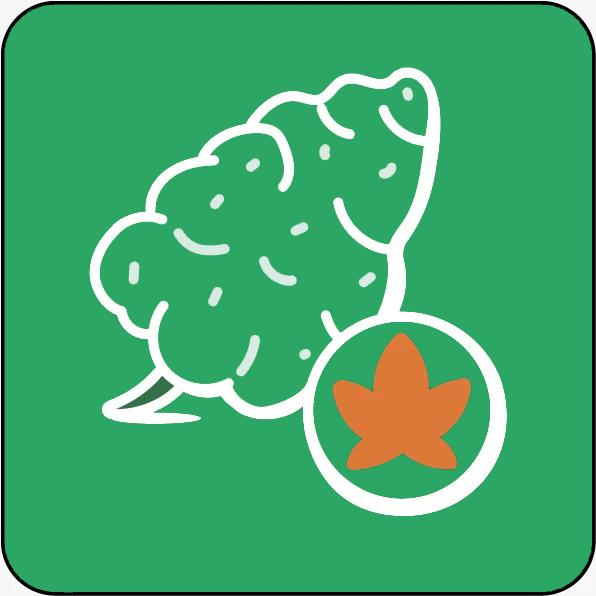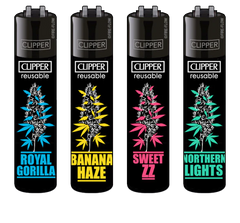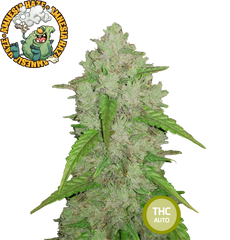The science and secrets behind the tests

In Italy, as in many countries, driving under the influence of drugs, including cannabis, is taken very seriously because of the risks it poses to road safety.
Last June, the Council of Ministers discussed a bill to reform the Highway Code, consisting of eighteen articles. The objectives include creating safer roads, safeguarding vulnerable users such as cyclists and motorcyclists, simplifying regulations, and providing guidelines for emerging forms of mobility. In particular, Minister Matteo Salvini has promised a zero-tolerance approach to impaired driving, particularly targeting repeat offenders.
The proposed changes to drug laws suggest a significant shift in the way cases are prosecuted. In this scenario, a positive saliva test during a traffic stop would be enough to trigger an immediate license suspension, followed by a subsequent revocation and a three-year ban on getting a new license. This potential change in the law would mean that people who drive days after drug use could also face legal consequences. The new approach would remove the need to prove impairment and rely solely on a positive test result.
While we wait to find out whether this proposal will be approved or not, we want to inform you about the methods and science behind the tests that reveal the presence of narcotics in our bodies, in particular those used to find cannabis and cannabinoids.
Drug Tests: How to Detect THC and Other Cannabis Components

Drug tests detect the presence of specific compounds or their metabolites in body fluids, such as urine, blood, saliva, and hair. When it comes to cannabis, the target compound is primarily delta-9-tetrahydrocannabinol (THC) and its metabolites, particularly THC-COOH . The purpose of the tests is to determine whether someone has recently consumed cannabis or whether metabolites from past use are present, with the primary goal of detecting THC in the test subject's system.
While the immediate effects of THC wear off quickly, trace amounts of THC and other cannabinoids can remain in the body long after the last use. How long THC will be present in the human body depends on several variables, including the method of consumption , the frequency of use, and the specific type of testing you undergo. In the following sections, we’ll delve into the fundamental factors that shape how long THC will be present in the body, along with strategies to speed up its elimination.
Cannabis can be detected in the body through a variety of methods, each with its own detection window and sensitivity. Here are the most common types of drug tests used to detect cannabis use:
Types of Tests
Urine test
Urine tests are the most common method of detecting cannabis use, popular due to their convenience and speed. These drug tests look for and detect the presence of THC-COOH, a metabolite of THC, which is stored in fat cells and slowly eliminated through urine. The detection windows for THC in urine vary from a few days to several weeks after cannabis use, depending on the frequency of use and individual factors such as frequency of use, metabolism, and amounts of body fat.
Blood tests
Blood tests measure the presence of THC in the blood, providing a more immediate indicator of recent cannabis use. THC is rapidly metabolized and can remain detectable in the blood for a short time, usually a few hours to a day after use. Blood tests are often used in cases where immediate impairment is suspected, such as roadside tests for driving under the influence.
Saliva tests
Saliva tests, or oral fluid tests, are becoming increasingly popular for detecting recent cannabis use. Saliva tests have relatively short detection times compared to other methods such as urine or hair tests. For occasional users, it typically takes about three days for all traces of THC to dissipate. In contrast, for a regular cannabis user, this time frame could extend to about a month.
These tests are often used during traffic stops to determine whether drivers have recently used cannabis.
Hair test
Hair tests have a longer detection window than urine, blood, or saliva tests. With this type of testing, THC in our bodies is deposited in hair follicles and can be detected for up to about 90 days after use, facilitated by extraordinarily sensitive laboratory equipment. Although more expensive than alternative screening methods, these tests are mostly used by governments or law enforcement to authenticate a broader historical usage history.
Detection Factors of Marijuana and THC Metabolites

Several key factors influence the detectability of cannabis in tests. First, the frequency and amount of cannabis use plays a crucial role. Habitual marijuana use can lead to the accumulation of cannabinoids in the body, extending the time they can be detected. Additionally, the potency of the cannabis product is important; high-potency products can result in prolonged detection periods.
The method of consumption also affects detection. Inhalation methods such as smoking and vaping generally result in shorter detection windows than edible consumption. This is due to the rapid assimilation of cannabinoids when inhaled.
Individual metabolism is another significant factor to consider. People with slower metabolisms may process cannabinoids more slowly, leading to longer detection times. Additionally, an individual’s body fat percentage can impact detectability. Cannabis compounds are fat-soluble and can be stored in fat cells, resulting in a longer detection window for individuals with higher body fat percentages.
In short, cannabis detectability is influenced by frequency of use, product potency, method of consumption, metabolism, and body fat percentage. Understanding these factors is critical for people who are testing and want to manage their cannabis use accordingly.
How to expel cannabinoids from blood and urine before a

To help your body eliminate cannabinoids before a drug test, there are several steps you can take. First, it is essential to drink plenty of water to help eliminate toxins, including cannabinoids. However, it is important to be careful not to overhydrate, as excessive water consumption can lead to water intoxication.
Another tip to follow is to eat nutritious foods to support your metabolism and overall health. Focus on fruits, vegetables, lean proteins, and whole grains. Since cannabinoids are stored in fat cells, opting for low-fat foods can reduce the risk of storing more cannabinoids.
Engaging in regular physical activity can increase your metabolism and help eliminate cannabinoids. Cardiovascular exercises such as running, cycling, or swimming are particularly effective.
Saunas or hot baths can also help you expel toxins by promoting sweating and activating the elimination process.
Some herbs, such as dandelion, fennel, and horsetail, have diuretic properties that can help with detoxification. Taken in herbal teas or as supplements, they can help eliminate THC and other cannabinoids.
While these steps can potentially help your body reduce THC levels and eliminate cannabinoids faster, there is no fully effective method to ensure complete removal in a short amount of time or to successfully evade a test. Always approach drug testing situations with honesty and awareness of the potential results.
Are CBD and Cannabis Light traceable in drug tests?
As for CBD (cannabidiol), present in light cannabis, there is currently no standardized method to measure its levels in the body. Most tests focus mainly on the detection of Cannabinoids and do not distinguish between THC and CBD.
Conclusion
In a world where drug testing is present in a variety of settings, understanding the intricacies of cannabis detection is more important than ever. Different tests, from urine to hair, along with the methods they employ, shed light on an individual’s cannabis use history. Since factors such as frequency, potency, and metabolism interact to influence detection windows, it is clear that navigating this reality requires a combination of knowledge and awareness. By learning this knowledge, you can take any tests equipped with the information you need to navigate this experience with awareness and caution.









